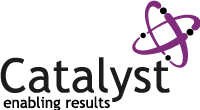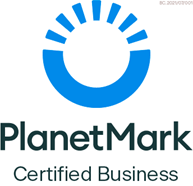One of the best things about working with Continuous Improvement practitioners is seeing the results that come from their practical application of continuous improvement techniques. I’m not just talking about cost savings, time savings and the joys of a smoother process, reduced rework and happier customers – though there’s certainly plenty of that. I’m talking about the confidence, competence and enthusiasm that the practitioners develop.
It’s magical, but it’s no mystery. Here are some tips for getting the best results from continuous improvement techniquesand developing your proficiency as a practitioner.
Keep it real
The sheer number of continuous improvement techniques, the complexity of some of these, and even their names can be mesmerising. It’s possible to forget that all they are is a means to an end. For example, practitioners could use numerous statistical techniques to determine cause and effect and may get stuck in the Analyse phase of a Lean Six Sigma project, using tool after tool to look for absolute certainty that a particular factor is responsible for the problem in the process. Instead of looking for certitude let’s get back to the problem we were trying to solve in the first place – if we address this factor now will it have a positive impact? Keep it real, or in the words of Walter Isaacson, “never let a passion for the perfect take precedence over pragmatism”.
Practice Continuous Improvement Techniques
Remember that the expert in anything was once a beginner. Keep going! In his TED talk entitled ‘How I held my breath for 17 minutes’ the magician David Blaine describes the approaches he took to achieve it – including slowing his heart rate, reducing co2 and increasing o2 in his body, sleeping in a hypoxic tent to simulate altitude, and calling Oprah Winfrey. None of those things are necessary when using continuous improvement techniques, but there are undoubtedly things that can be improved upon with practice. Maybe it’s the use of statistical tools, the Design of Experiments technique, communicating with stakeholders or writing legibly on a flipchart. The more you practice, the better you get.
Seek feedback
The ‘plus/delta’ (+/Δ) technique is a simple way to evaluate effectiveness and capture feedback. A Plus is something that has worked well, or something that could be built upon or repeated (“let’s do more of this”). A Delta is an area for improvement or development, or something that shouldn’t be repeated (“let’s do less of this” or “let’s not do this again”). To carry out a plus/delta evaluation simply draw a line down the middle of your flip chart or whiteboard, and label each side with the headings ‘Plus’ and ‘Delta’. Then away you go – ask your team to populate each side with appropriate feedback. There are many opportunities to use this technique, e.g. to assess how well particular projects are progressing, or at the end of workshops to round up observations on what worked well and what could be done better next time. Inviting feedback can feel difficult at first but it gets easier with practice, as does using the feedback to adjust and address improvement opportunities.
See the bigger picture
No man is an island,
Entire of itself.
Each is a piece of the continent,
A part of the main. (John Donne)
It’s vital to remember the bigger picture when applying continuous improvement techniques. Link yourself in with stakeholders to keep abreast of changes and opportunities that could impact on your work. Appointing a ‘Sponsor’ or ‘Champion’ that can act as your ‘Voice of the Business’ can be useful in this respect.
The Forcefield Diagram is a helpful technique for understanding the context of a project or a planned change in an organisation. Use it to capture what else is happening, and whether these projects, schemes and initiatives will provide positive drive to support change, or negative forces that will present a barrier to it.
Eat your own dog food
Less poetic, but just as pertinent, is ‘eating your own dog food’ – a phrase we use at Catalyst to remind us of the value of continuous improvement techniquesto our own operation. Some prefer to call this “drinking our own champagne”!
Continuous improvement techniques can be employed very effectively as a means to understand and develop personal capability. For example, using creativity tools and techniques to encourage different ways of thinking and generate imaginative solutions, or fishboning the causes of good or not so good performance. The opportunities are endless. And this is where the magic happens.
If you give people tools, and they use their natural abilities and their curiosity, they will develop things in ways that will surprise you very much beyond what you might have expected. (Bill Gates)
Jo is a motivated and energetic business improver with extensive experience in developing and deploying Continuous Improvement, Lean Six Sigma, ISO and Excellence strategies across a broad range of organisations and sectors.





